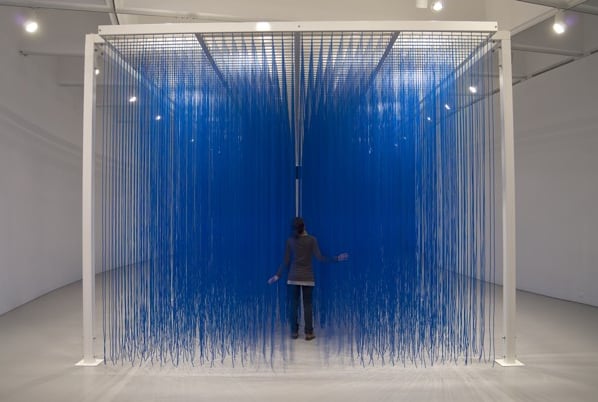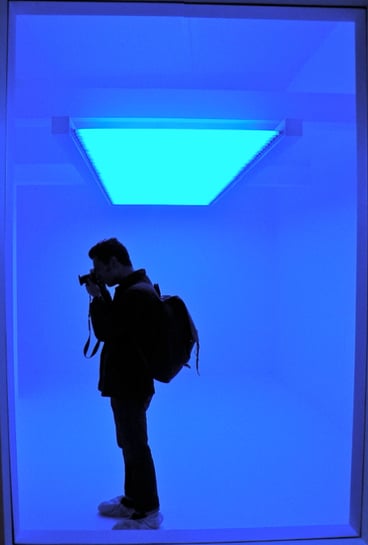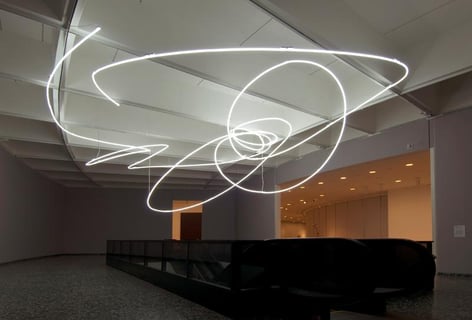The Body Electric
Christine Haroutounian
3/20/2012


The Hirshhorn Museum’s latest exhibition, Suprasensorial: Experiments in Light, Color, and Space, was a welcome change after spending three consecutive days visiting the monuments and historical collections that mark both Washington D.C.’s splendor and its inescapable conservatism. Rather, it was a blinding change–in a town where black business attire and concrete monuments are found in every corner, a show reevaluating the international Light and Space movement of the late 1960s and 1970s activated a sensual palette I had lost touch of after flying out of the boundaries of LA’s saturated streets and prolific contemporary art world. After all, the show did travel from MOCA, where it was curated by senior curator Alma Ruiz, and then re-imagined for the space of the Smithsonian’s center of modern art, by Hirshhorn senior curator Valerie Fletcher. Still, the five large-scale installation pieces made by Latin American artists undid what art in museums anywhere in the world have imprinted in visitors’ minds: DO NOT TOUCH THE ART.
Instead, works like Jesus Rafael Soto’s “Blue Penetrable BBL,” ignited noise and a heightened level of energy within the generally sterile and silent interior of the museum. At their own pace, visitors got lost within the forest of blue nylon strings that make the piece. Some glided by in a wonder while others huddled in groups, taking pictures and videos with their smart phones while moving quickly in circles, because, well, they actually could without immediately being stopped by guards or the ear-splitting danger signal set off by censors.
Not every piece requires corporeal interaction however. Carlos Cruz-Diez’s “Chromosaturation,” focuses less on touch than on sight. The three-room installation is a monument to color, with each room dedicated to a particular neon red, green, or blue. Similarly, each room has one rectangular cutout that opens to the hallway which runs along the length of the piece. These cutouts function as viewing windows for those who have yet to enter the installation with protective foot cloths used to shield the purity of the space from footprints. I was completely transfixed by the sheer blocks of color, which seemed less like light particles and more like contained liquid. Standing in the hallway looking in through the viewing window, I felt as if “Chromosaturation” was an aquarium on psychedelics–the people inside, equally spellbound by the intensity of the work, were swimming in an unnatural habitat flooded by vast expanses of color, staring back into the viewing windows to find the reflection of their bodies, of familiarity, within this alien landscape.


Lucio Fontana’s “Neon Structure for the IX Triennale of Milan,” beckoned me to look upward given its position above the escalator leading up to the exhibition, ushering me physically and visually toward the sculpture and into its light. The work’s awkward placement forced me to choose between remaining
mesmerized by the work’s curvilinear nature, or ripping myself out of the almost magical moment in order to avoid possible public embarrassment via injury as the escalator came to its end. Its unusual location however highlights the body interacting with art furthermore: Fontana’s piece not only makes you aware of your own body as an apparatus in the world but also its vulnerability when it must clash against its impulses.


